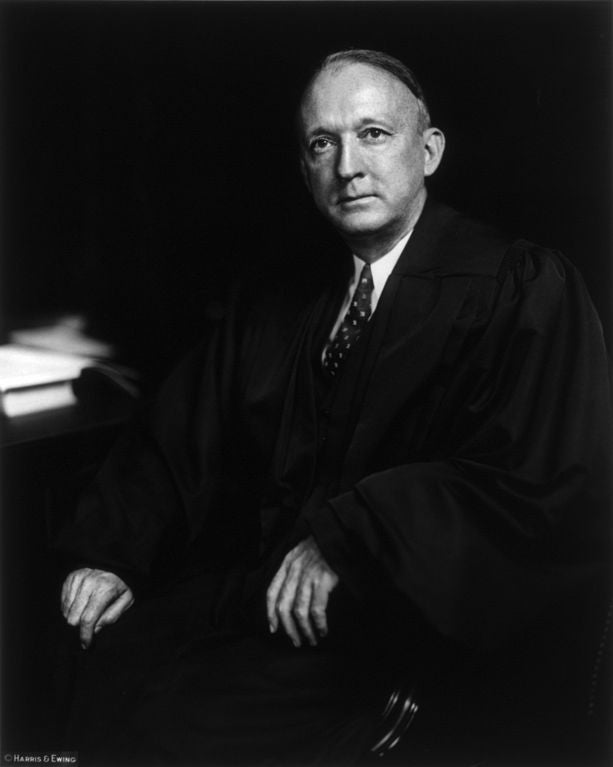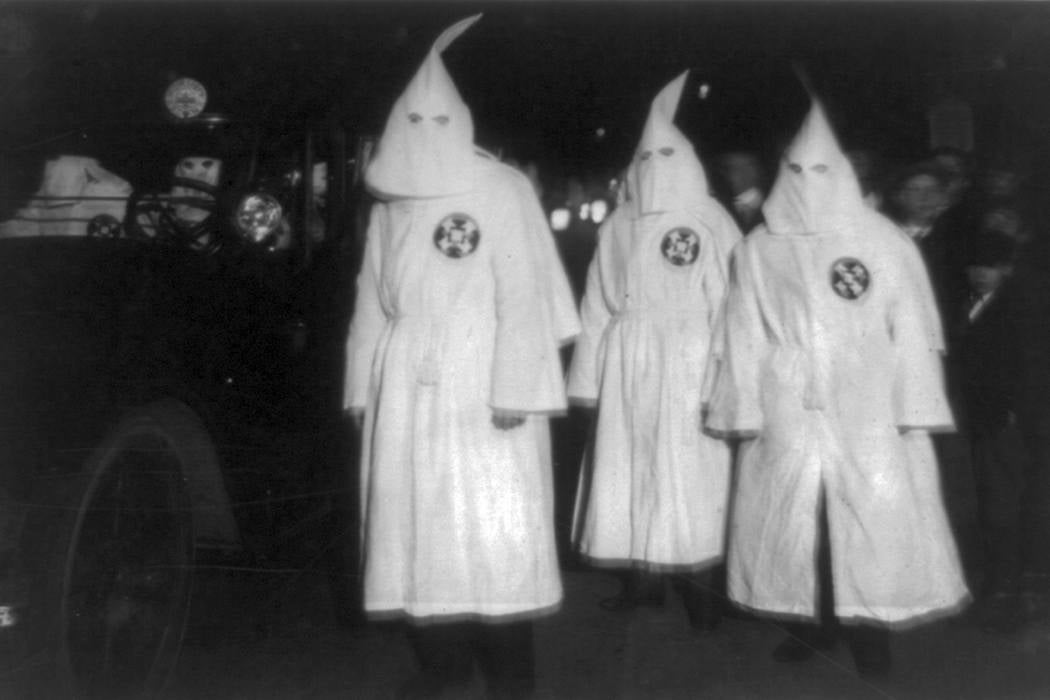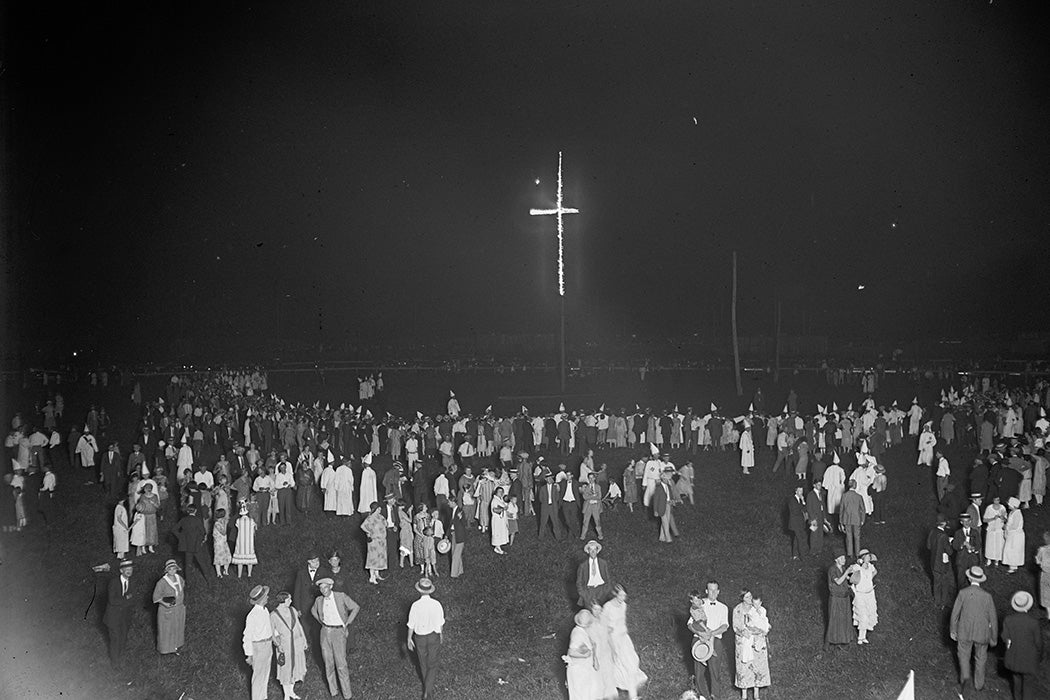White supremacism is on the rise again. The Ku Klux Klan supported Donald Trump for president. Former Klansman David Duke made a bid for the Louisiana Senate, hate incidents followed the election, and Trump named as White House senior counselor Steve Bannon, former head of Breitbart.com, a website popular with white supremacists. This isn’t the first time that so-called white nationalists have been involved with American politics. In the 1920s, during what historians call the Ku Klux Klan’s “second wave,” Klan members served in all levels of government.
The Klan didn’t start as a political force, but as a lark. Shortly after the Civil War ended, some Confederate veterans got together and played around with hoods and robes, wearing them while riding horses through town in Pulaski, Tennessee. They formed a secret group with outlandish names for its officials, like “Grand Cyclops” for the leader. When they saw how their costumed rides scared blacks, the group turned to vigilantism.
As blacks were being freed and the country began extending civil rights—including voting rights—Klan groups called “Klaverns” formed around the South to keep blacks subordinate. The group capitalized on the Southern tradition of “night riders,” who intimidated slaves to control them. “From 1866 through 1871, men calling themselves ‘Ku-Klux’ killed hundreds of black Southerners and their white supporters, sexually molested hundreds of black women and men, drove thousands of black families from their homes and thousands of black men and women from their employment, and appropriated land, crops, guns, livestock, and food from black Southerners on a massive scale,” writes the historian Elaine Frantz Parsons in Ku-Klux: The Birth of the Klan During Reconstruction.
More to Explore
How 1920s Catholic Students Fought the Ku Klux Klan
The Klan was a big issue in the 1872 presidential election, but the group was in its death throes. It rose again after the 1915 release of D. W. Griffith’s pro-Klan movie, The Birth of a Nation, when the country was reacting to many societal changes brought on by the temperance movement and World War I. This second-wave Klan emerged as a morality police to fight immigration, minorities, and the loose morals of speakeasies, bootlegging, and political corruption. While the first Klan focused on blacks, this wave also fought Catholics, Jews, intellectuals, and anybody else it felt was hurting America. At heart, it was a nativist movement that drew sympathy from those who still saw blacks as unequal to whites.
Heavy marketing drove membership in the second Klan to between 3 and 7 million; that added up to a lot of commissions for recruiters, who got a percentage of member fees. The majority of this KKK were mainstream, mostly Protestant, citizens. A portion of the second-wave Klansmen murdered or beat those they considered un-American, but a majority saw the group as a social or even charitable club. Klaverns gave money to churches and helped other community groups such as baseball teams. Members celebrated holidays together and attended one another’s funerals.
While men made up the majority of Klan members, women “poured into” the group, which valued home, hearth, and the sanctity of womanhood. Female Kluxers wore skirted robes and had their own group, WKKK—Women of the Ku Klux Klan—which organized activities that were often separate from the men’s. Doing so turned some of the Klanswomen into leaders and activists.
As W. E. B. Du Bois reminds us, political activism was a key goal of this KKK. The historian David Chalmers, author of Hooded Americanism: The History of the Ku Klux Klan, has called the 1920s Klan a “great fraternal lodge” with “nationwide political power.” The Illinois Klan newspaper, Dawn: A Journal for True American Patriots, encouraged members to recommend and become candidates for office to accomplish their aims.
Want more stories like this? Sign up for our weekly newsletter.
Illinois was a prime example. Its governor, Len Small, was elected with help from the Klan, which was allowed to use the state fairgrounds in the capital at least twice for large-scale events, including an initiation of thousands of new members. “We know we’re the balance of power in the state,” proclaimed Charles G. Palmer, an attorney and “grand dragon of the Illinois Ku Klux Klan,” in the October 24, 1924, Chicago Daily Tribune. According to Palmer, the Klan controlled elections and could get whatever it wanted from the Prairie State.
Illinois newspapers and a state investigation into the Klan’s use of the fairgrounds turned up Klan members in government: a legislator, possibly the governor’s secretary, many in its highways department, the assistant secretary of the Senate, and fairground workers. While Klansmen proclaimed they got Governor Small re-elected (one appeared with him at a campaign rally), Small claimed that he was not a member.
Many other states’ leaders were. According to a 1976 report by the Illinois Legislative Investigating Commission, “governors in 10 states and 13 senators in nine states were elected with Klan help. At least one senator, Hugo Black, who was destined to become a United States Supreme Court Justice, had been a Klansman.”

Alabama governor David Bibb Graves was Grand Cyclops of the Montgomery chapter. He served two terms, starting in 1927. Alabama’s neighbor, Georgia, also had a Klan governor in Clifford Mitchell Walker, who served from 1923 to 1927. Walker often talked to other Klansmen before making decisions about state business.
The situation wasn’t better in the West. In 1920s Colorado, the Klan “could well believe they owned the state,” wrote the hisorian Carl Abbott in Colorado: A History of the Centennial State. In Denver, Klansmen held the offices of head of public safety, city attorney, chief of police, and several judgeships, and they were behind the election of its mayor. At higher levels, the Klan helped elect the state’s U.S. senators and governor, while Ku Kluxers themselves held four of the state’s top offices and one seat on its Supreme Court. “The Republican Party, heavily influenced by the Klan, controlled both houses of the legislature,” according to Abbott.
By some accounts, Indiana had the most Klan members of any state. One third of its white American-born men joined. The group grew so fast it ran out of white robes three times. Indiana Klansmen swayed both political parties and got members elected to many positions. Its governor, Edward Jackson, was a close friend of the the Indiana Klan leader, D. C. Stephenson, a pudgy man with a reputation for high living, carousing, and trouble with the law.
Not all governors wholly embraced the Invisible Empire. The Oklahoma Democrat John Calloway Walton beat a Klan-backed Democrat to win the state’s top seat. Afterward, he became friend and foe to the KKK. First, Walton took the Klan oath and even appointed some Klansmen to office, but in 1923, a year after he was elected governor, he turned. Walton declared martial law in parts of the state in order to check the Klan’s spread. The organization didn’t react kindly and got the numerous legislators friendly to it to impeach him.
Two years later, around the peak of its influence, the not-so-secret society was dealt a big blow. Indiana Klan leader Stephenson was found guilty of murder, resulting from the brutal rape of a young woman. Not only was it the end for him and Indiana governor Edward Jackson, but it was also the beginning of the end for the Klan nationwide. Contributing to that decline was the failure of the Klan’s fearful predictions of America’s ruin at the hands of immigrants and other immoralists, and its inability to solve problems it saw in the country.
In the end, though, the Klan might have created its own undoing. The self-proclaimed morality police was plagued by its record of violence and scandals. While Stephenson’s was the worst, there were accusations of financial wrongdoing in Klaverns, heavy-handed leadership, internecine feuds, and abusive retaliations. By 1930, the Klan seemed to be pretty much done.
A third wave arose in the South during the Civil Rights era of the 1950s and ’60s. New members, along with some 1920s Kluxers, fought school desegregation and the movement to give blacks equal rights. Like the original Klan, this third incarnation was highly violent. “The Klans and their allies were responsible for a major portion of the assaults, killings, bombings, floggings, and other acts of racial intimidation that swept the South in the first years of the 1960s,” according to the Anti-Defamation League. But this third-wave Klan was much smaller, peaking somewhere between 35,000 and 50,000 members. The Klan’s violence, along with a federal investigation into its activities, brought those numbers down to fewer than than 6,000 after the 1960s.
Weekly Newsletter
But white supremacists didn’t disappear. Today, they are splintered into different organizations and have been joined by new hate groups, including Neo-Nazis, the Center for Security Policy (anti-Muslim), and Black Hebrew Israelites (black separatists). As of 2015, their numbers are increasing. (To see what hate groups are in each state, check out the Southern Poverty Law Center’s national hate map, which tracks 892 organizations in the U.S.)
Today, we see some of the same dynamics that led to the Klan’s various rises throughout the last 160 years: fear of immigrants, minorities, and crime, clashing moral values, and a changing world. But history has proven that vigilantism doesn’t work in the long term in a democratic society. It self-destructs.








